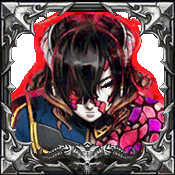Post by RichterB on Sept 6, 2018 13:39:40 GMT -6
I'm trying to figure out when (and why) Koji Igarashi took the reins of Castlevania, and what exactly that entailed, really. Here's why. I've been doing some Castlevania research lately for a few potential projects, and listen to this:
in Nintendo Power 145, Koji Igarashi is listed as "producer of Castlevania: Circle of the Moon." He has interviewed quotes including:
"Dracula tries to absorb Morris, his former nemesis, to regain his full power. He knocks aside Nathan Graves and Hugh Morris as insignificant, and they are dropped into a pit. Thus starts the adventure of Nathan as he tries to reach his master and defeat Dracula."
"[The DSS System] adds a lot of depth to the game play, since different players will utilize these effects in different ways." (Remember this one, I'm going to come back to it.)
"Using the spectacular power of the machine, we were able to create a dark, gothic atmosphere that could not previously be done...We hope that everyone will play this game with headphones, since it will add so much to the game."
"The sound team was pretty much given free reign [sic] when it came to what they wanted to do with the music. We never felt limited in what we could attempt. Granted, it's not like a CD when it comes to sound, but we were more than satisfied with what could be done."
The article then uses an indirect quote to say: "Mr. Igarashi hints that there are hidden things in the game that gamers can uncover, but, unfortunately, he and Konami would like to keep them secret for now."
Hearing all that, even if possibly Nintendo Power got the job title translated wrong, you would assume he's the producer on Circle of the Moon. However, he's not listed in the game's credits or at MobyGames, either. Not on any tier, even something like "executive producer" or "special thanks."
Instead, explicitly, Ko-G (aka Koji Horie) is listed as the producer.
This gets weirder because...
From a GameSpot 2002 TGS interview:
GS: What do you think of Circle of the Moon? Was it used as a reference during the development of Harmony of Dissonance?
[IGA]: Circle of the Moon has great music, but with Harmony of Dissonance, we had to sacrifice the music and focus more on the visual side of the game. I [had problems] with the control in Circle of the Moon, and action games should always have good control. Of course, graphics-wise, it was really bad because it was so dark, so we wanted to make the next game much brighter. I also wasn't happy with the dual-card system in Circle of the Moon because it didn't really belong in the Castlevania world, and that's why we made the spell-fusion system in Harmony of Dissonance--because it's linked into the Castlevania world. That's one of the most important things I wanted to change from Circle of the Moon.
[IGA]: Circle of the Moon has great music, but with Harmony of Dissonance, we had to sacrifice the music and focus more on the visual side of the game. I [had problems] with the control in Circle of the Moon, and action games should always have good control. Of course, graphics-wise, it was really bad because it was so dark, so we wanted to make the next game much brighter. I also wasn't happy with the dual-card system in Circle of the Moon because it didn't really belong in the Castlevania world, and that's why we made the spell-fusion system in Harmony of Dissonance--because it's linked into the Castlevania world. That's one of the most important things I wanted to change from Circle of the Moon.
That's curious. In Nintendo Power he was praising the DSS, and it sort of became the basis for every magic system IGA would go on to create. Yet here, he says it doesn't belong in Castlevania. Was it just a semantics thing? Like books (and later souls) over cards? (When one considers that cards play a symbolic magical role in Jojo's Bizarre Adventure (starting with Part 3) and IGA has no trouble lifting references from Jojo into his Castlevania games, that seems a little strange. Especially when he has no qualms about having pies as sub-weapons in Portrait of Ruin.)
But it gets more interesting, because in Nintendo Power 230, IGA says this: "I didn't actually work on Circle of the Moon, but I feel connected to it in some way. The director on that title is on my team right now, so perhaps it was fate for us to join!"
If he didn't work on the game, and he wasn't its producer, why was he the one out front talking about its details and development back in Nintendo Power 145? (I suppose Nintendo Power could have made a huge gaff and mixed up two different people named Koji, but that seems rather far-fetched).
Now, MobyGames has IGA's credits. He's primarily listed as a producer, with some ambiguous scenario credits to his name as well and the rather ambiguous "assistant director" role on SotN. With Bloodstained: RotN, I've seen interviews where he seems pretty intimately involved with macro structures like the map design, but with some of these Castlevania games, I wonder what his role, functionally, was. Did he come up with an idea, pass it along, and then watch it develop and offer pieces of advice along the way? I mean, he's "scenario supervisor" on Bloodstained: Curse of the Moon, but we know that he's not into developing Classicvanias--he's gone on the record about that before, stating their mix of action-platforming is generally too demanding. That was mostly IntiCreates, I'd think. But if that was a subset of a scenario role, things like "scenario writer" seem sort of nebulous, too. I remember an old interview, that I can't find, where Shigeru Miyamoto said with a laugh something to the effect of: "If it says executive producer, that means I really didn't work on the game."
It seems to me that the producer mantle was given to IGA after the Nintendo 64 games. "I actually wasn't involved in these games," he says about them in Nintendo Power 230. So, presumably, it was with the release of Castlevania Chronicles in May 24, 2001 in Japan that he got his new role after being "assistant director" to SotN. Meanwhile, Circle of the Moon's Japan debut was March 21, 2001, which was before that date.
So, what was he doing being sent out as producer for a game that didn't have anything to do with him?
As I pose this, after writing all this down, a possible answer comes to mind on that point. Konami, for whatever reason, felt having a continual frontman would make Castlevania more legitimate, and made him Castlevania's overall producer by May 2001. When it came time to sell Circle of the Moon in North America, he was therefore sent out to play the part of producer. But then, it seems like he knows about the game's development when he admittedly didn't even work on it. That concerns me on some level as a Castlevania fan, because then how do I know he's not just playing a part in describing later Castlevania entries that he may or may not have functionally shaped? There's a quote in Nintendo Power 230 about his 3D entries, where he says they're his "own take on Castlevania in 3-D" and "I have to wonder what could have been if I had been able to include everything I would have liked to." When taken in the context of Lament of Innocence to Curse of Darkness, I have to wonder why anything else needed to be "included" versus really reworked from the ground up. Because for all of Curse's intriguing ID system, interconnected world, and 3D camera, it was still a hack-n-slash grinder through (functionally speaking) more long, flat passageways than even LoI per square footage. Was somebody else setting up the game's conceptual 3D structure and he was just filling in little bits and pieces of embellishment?
This is not to bash anybody, as I'll admit it might come off as accusatory; rather, this is just a matter of trying to get a better grasp on the behind-the-scenes.
Anyone have any idea about A.) Why the discrepancy in IGA's title of producer around the time of Circle of the Moon, and B.) What did his role of "producer" and some of these "scenario" credits really entail? Moreover, to this day, I'm still not clear on at what point and to what extent he shaped SotN after the director reportedly departed the development.
...It's intriguing that he became Castlevania's steward, since in one of the interviews I read featuring one of he top members of the N64 games, it was stated that anyone who comes through Konami wants to work on its signature franchises, which he specifically mentioned Castlevania being one. Was there really no one else with interest in taking the reins, or did Konami just put its foot down and tell everyone there would only be IGA in charge?








 yey
yey